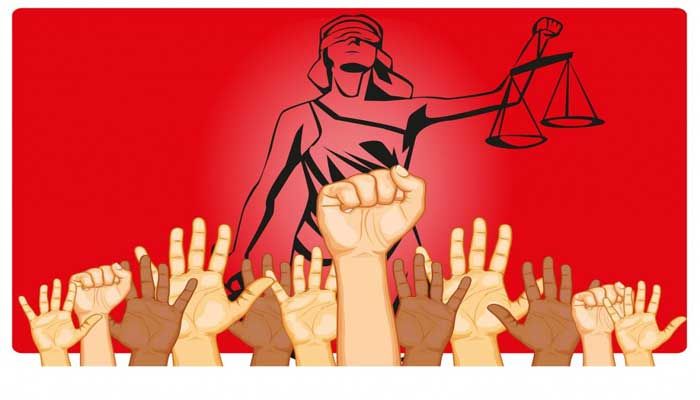Human rights litigation in India is an ongoing conversation between constitutional ideals and ground realities. The Constitution promises every person dignity, equality and protection of life — yet, in many instances, the same state machinery entrusted to uphold these rights becomes the site of violation. For victims, especially from marginalised groups, seeking redress is rarely straightforward: it is a legal, emotional and procedural gauntlet. This blog outlines the legal foundation that empowers victims, the practical obstacles litigants face, key judicial and statutory anchors, and realistic reforms that could make litigation a genuine path to justice.
The Legal Backbone — Where Victims Can Turn
At the heart of human rights litigation in India lies Article 21 (Right to life and personal liberty), read together with Articles 14, 19 and 22. These constitutional guarantees are enforced through writ jurisdiction (Articles 32 and 226). Beyond the Constitution, the Protection of Human Rights Act, 1993 (establishing the NHRC and SHRCs) provides statutory space for complaints and investigations.
Criminal procedure rules (CrPC Sections such as 154 on FIRs, 164 on recorded statements, and 197 on sanction for prosecution of public servants) and the Indian Evidence Act shape how cases proceed in practice. These instruments create the legal scaffolding victims use to hold the state accountable — but they do not by themselves ensure meaningful outcomes.
Judicial Interventions
The Supreme Court’s directions in D.K. Basu v. State of West Bengal (1997) — arrest memos, prompt medical examination, informing relatives, and production before a magistrate — remain fundamental safeguards to prevent custodial abuse. These procedural injunctions are often the first line of defense in custody-related litigation.
Why Litigation Is So Hard: Police Non-Acknowledgement and Deliberate Delay
One of the most immediate obstacles victims encounter is police reluctance to accept, record or properly investigate complaints. Refusal to register an FIR (the gateway to criminal investigation) is still common; when FIRs are refused, victims are forced to approach courts for mandamus — an extra step that consumes precious time and erodes evidence.
The Supreme Court’s decision in Lalita Kumari v. Government of Uttar Pradesh (2014) made FIR registration mandatory in cognizable cases and clarified when preliminary inquiries are permissible, but practical resistance persists at the station level.
- Police may manipulate station diaries or arrest timings.
- Investigations often lack impartiality when police are accused.
- Victims face intimidation and threats when pressing complaints.
Institutional and Non-Institutional Constraints
NHRC and SHRCs
Created by the Protection of Human Rights Act, 1993, these commissions can inquire and recommend but their recommendations are advisory. Many NHRC reports document custodial deaths and delays in implementation, underscoring the need for binding powers.
Forensics and Evidence Infrastructure
Many districts lack accredited forensic labs or prompt testing facilities. Chain-of-custody procedures are lax, and delayed medical examinations often weaken cases.
Legal Aid and Awareness
Though NALSA and state legal services exist, awareness and access remain uneven. Vulnerable groups often lack sustained legal representation and financial support.
Evidence Problems: How Proof Becomes the Real Battlefield
| Evidence Issue | Impact on Litigation |
|---|---|
| Delayed Medical Exams | Injuries fade, reducing credibility of torture or assault claims. |
| Broken Chain of Custody | Allows defense to allege tampering, weakening proof. |
| Manipulated Records | Fabricated station diaries or memos challenge authenticity. |
| Lack of Independent Testing | State labs’ credibility questioned; need for independent forensic verification. |
The DNA Technology (Use and Application) Regulation Bill, 2019 aims to regulate and ensure transparency in DNA-based evidence, though implementation challenges persist.
Landmark Cases That Shape Litigation Strategy
- D.K. Basu v. State of West Bengal (1997) — Procedural safeguards for arrested persons.
- Prakash Singh v. Union of India (2006) — Directions for structural police reforms.
- Nilabati Behera v. State of Orissa (1993) — Recognition of state liability for custodial death and compensation.
Real-Life Snapshots: How Statistics and Cases Tell the Story
Statistics from NHRC reports show thousands of custodial-death intimations yearly. Media reports highlight state-wise spikes. These are not mere numbers but families seeking justice amidst institutional barriers.
Emblematic Cases
- Nilabati Behera (1993): Compensation for custodial death.
- Lalita Kumari (2014): Mandatory FIR registration.
- Recent civil society PILs have exposed patterns of harassment and unlawful detention.
Practical Litigation Strategies — What Works
- Secure FIR registration or file for mandamus.
- Seek independent medical examination and preserve early evidence.
- Use D.K. Basu guidelines and request judicial supervision in investigations.
- File NHRC/SHRC complaints parallelly to create record pressure.
- Request CBI or SIT investigation in conflict-of-interest cases.
- Seek interim relief — compensation or legal aid.
- Engage media, NGOs, and pro bono counsel for advocacy and visibility.
The Way Forward — Reforms That Matter
- Implement Prakash Singh directives fully and uniformly.
- Empower human rights commissions with binding powers and stronger investigative capacity.
- Modernize forensic infrastructure and enforce chain-of-custody rigorously.
- Ensure nationwide witness protection, legal aid, and speedy trial mechanisms.
- Embed human-rights education in police training, ensure CCTV in stations, and transparent registers.
Conclusion
Litigating human rights violations in India is both necessary and arduous. The law and landmark judgments provide powerful tools — but law is only as effective as institutions allow. When victims confront state agents, litigation must be backed by strong procedural steps, scientific evidence, and institutional pressure. The remedy is not only legal: it is administrative reform, forensic modernization, and social empowerment. Until these elements align, human rights litigation will continue to be a struggle for many — a struggle the justice system must be designed to win, not to make enduringly painful.






